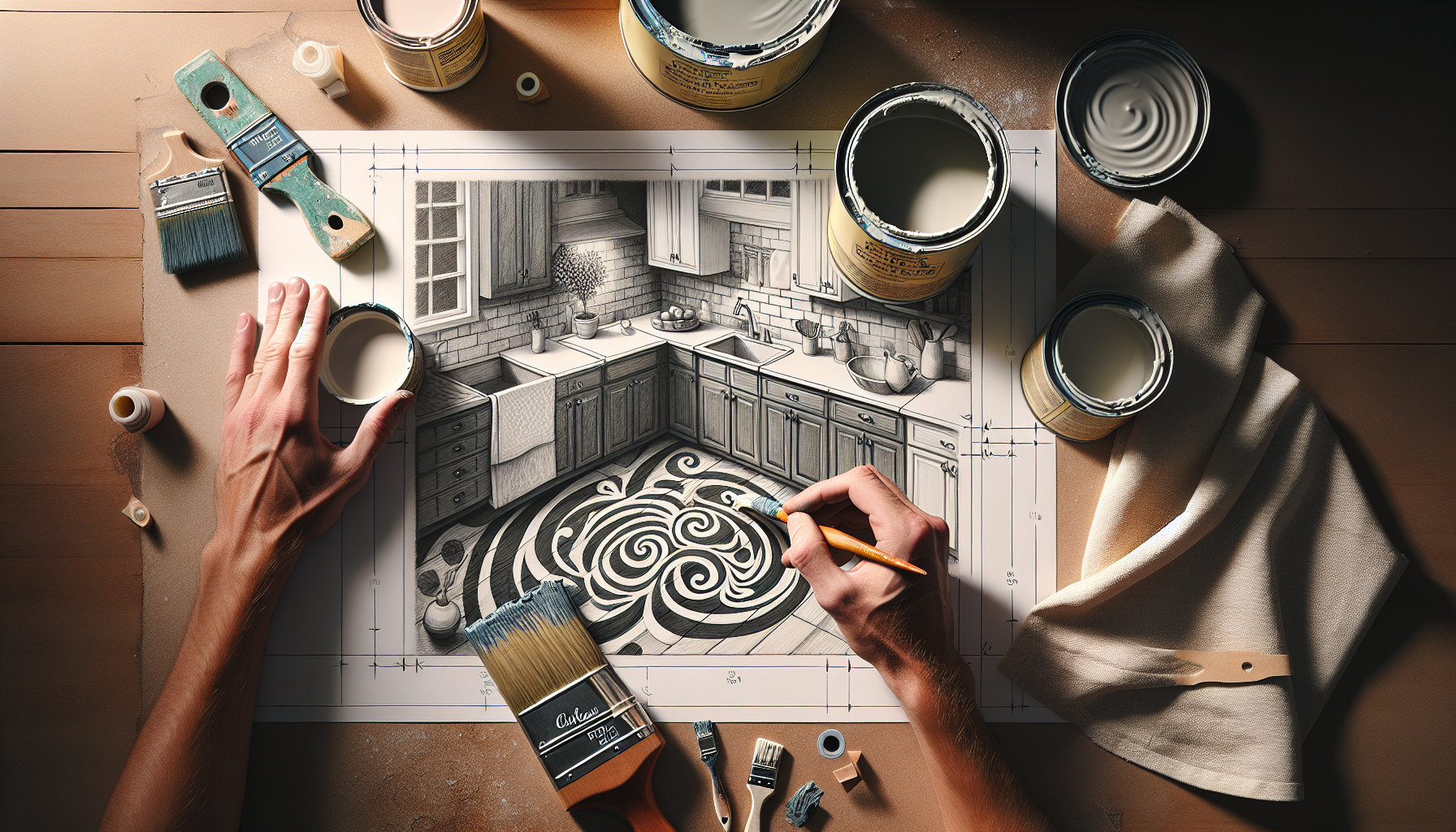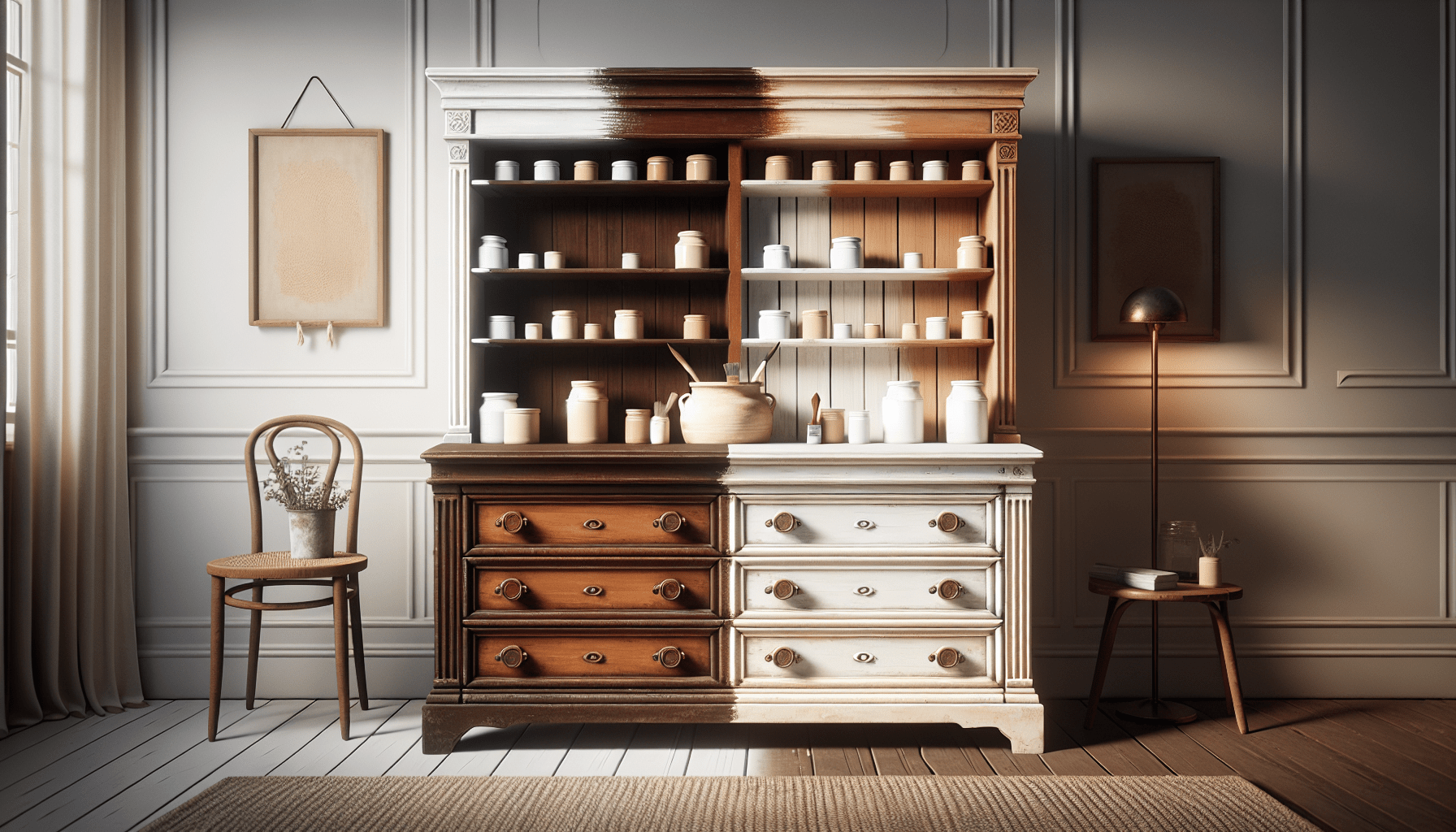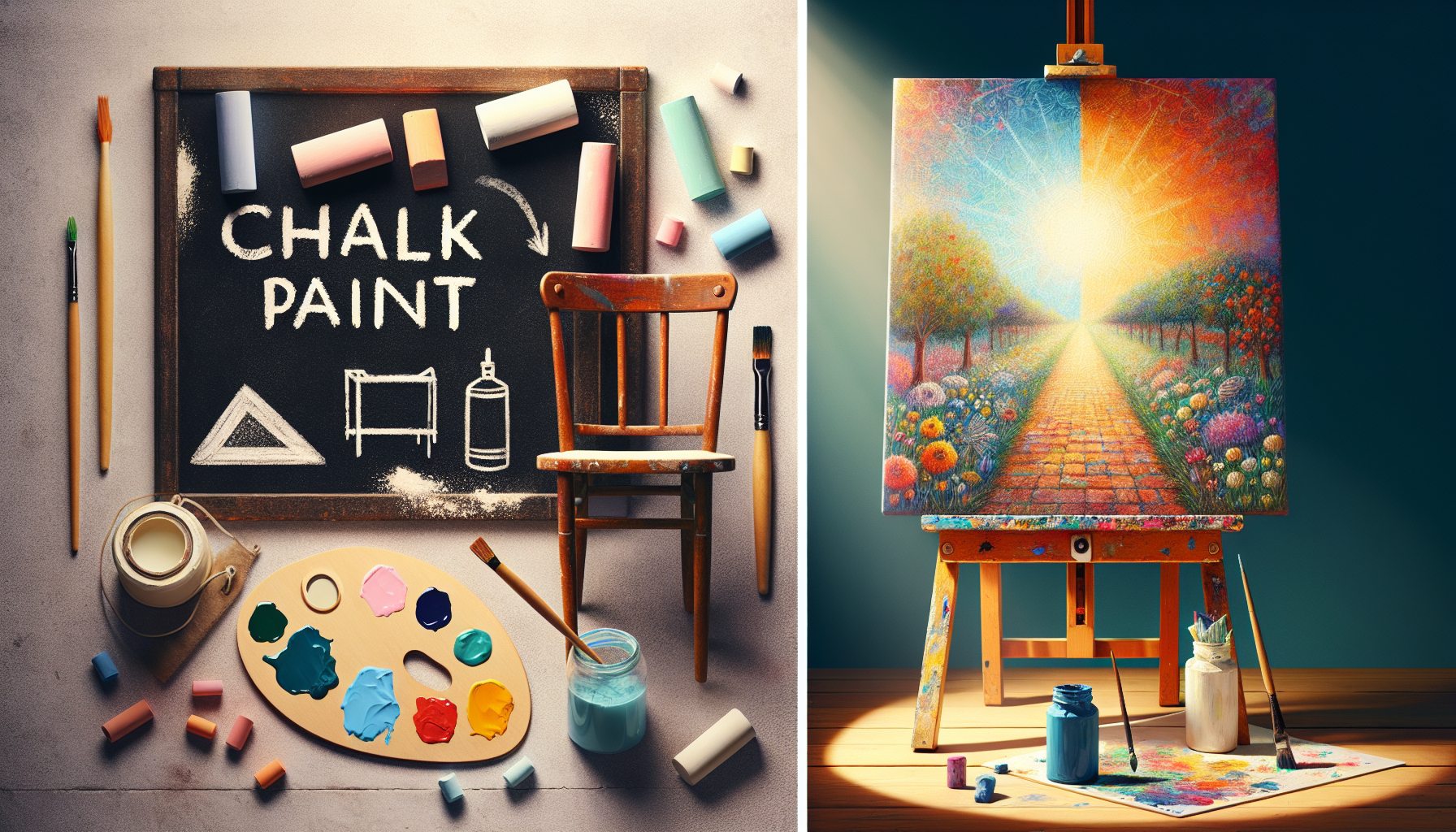Countertops are an essential element of any kitchen or bathroom, and their appearance can greatly impact the overall aesthetic of the space. But what can you do if your countertops are outdated, worn, or simply in need of a refresh? In recent years, chalk paint has gained popularity as a versatile and cost-effective solution for transforming various surfaces. But can you paint countertops with chalk paint? In this article, we will explore this question, examining the pros and cons, recommended techniques, and potential results of using chalk paint on countertops. Whether you are a DIY enthusiast or a homeowner looking for an affordable update, this article will provide valuable insights into the world of chalk-painted countertops.
Benefits of Painting Countertops with Chalk Paint
Painting countertops with chalk paint offers several notable benefits. One of the key advantages is the unique, rustic look that it adds to the surface. Chalk paint has a matte finish that gives countertops a vintage and distressed appearance, perfect for those seeking an antique or farmhouse-style aesthetic. This easily achieved transformation can instantly elevate the overall look and feel of a space.
Another significant advantage of painting countertops with chalk paint is the cost-effective alternative it provides to expensive countertop replacements. Rather than investing in entirely new countertops, which can be a considerable expense, using chalk paint allows you to refresh and update the existing surface at just a fraction of the cost. This makes it an appealing option for homeowners on a budget or those looking for a quick and affordable way to revitalize their kitchen or bathroom.
Furthermore, painting countertops with chalk paint provides an opportunity for creative expression. With a wide range of colors available, you have the freedom to choose a shade that complements your existing decor or adds a pop of color to the room. The versatility of chalk paint also allows for various techniques and finishes, such as distressing, stenciling, or layering, enabling you to personalize your countertops and make them truly unique.
Preparing the Countertop Surface
Properly preparing the countertop surface is essential to ensure a successful and long-lasting finish. To begin, thoroughly clean the countertops using a mild detergent or cleaner. This will remove any grease, grime, or residue that may interfere with the paint adhering properly. Be sure to dry the surface completely before moving on to the next step.
Next, sand the countertop to create a rougher texture, which helps the paint adhere better. Use a fine-grit sandpaper or a sanding block for this step, and be sure to sand in circular motions, covering the entire surface evenly. Take care to remove any dust or debris resulting from the sanding process.
Once the countertop is clean and sanded, apply a primer specifically designed for use on countertops. The primer serves as a bonding agent between the surface and the paint, ensuring a strong and durable finish. Follow the manufacturer’s instructions for application, allowing sufficient drying time before proceeding to the painting stage.
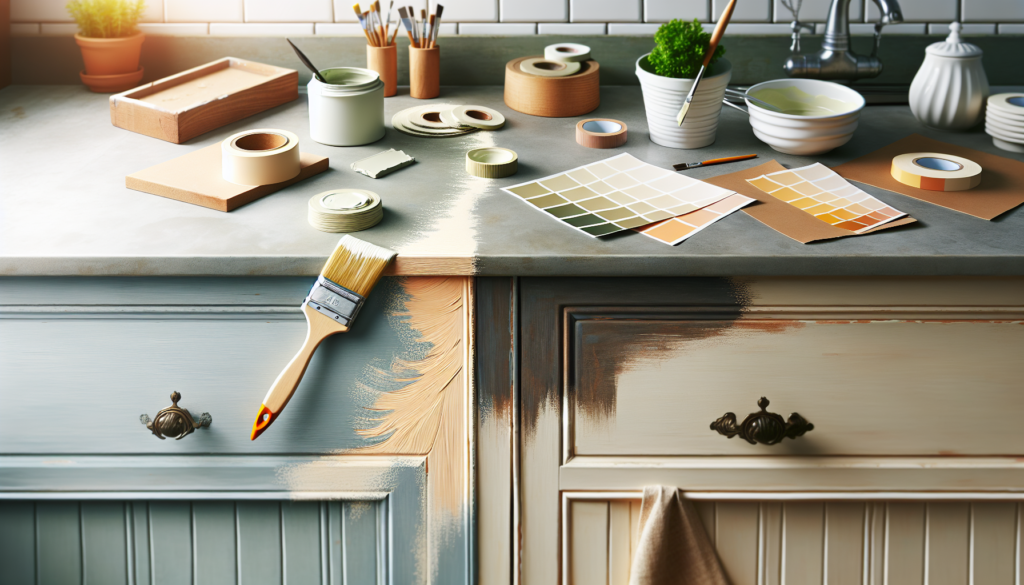
Steps to Painting Countertops with Chalk Paint
When painting countertops with chalk paint, it is important to follow a step-by-step process for the best results.
-
Choosing the right chalk paint: Selecting a high-quality chalk paint specifically formulated for countertops is crucial. Look for a paint that is durable, water-resistant, and suitable for high-traffic areas. Consider the color options and choose one that suits your desired aesthetic.
-
Applying the first coat: Begin by applying the first coat of chalk paint to the countertop using a brush or roller. Start from one side and work your way across, ensuring even coverage. Allow the first coat to dry completely before moving on to the next step.
-
Drying time and sanding: After the first coat has dried, assess the surface for any imperfections or unevenness. If necessary, lightly sand the countertop to smooth out any rough areas or brush strokes. Be sure to remove any dust or debris before proceeding.
-
Applying subsequent coats: Apply additional coats of chalk paint as needed to achieve the desired color and coverage. Allow each coat to dry fully before applying the next. Multiple thin coats will provide better results than a single thick coat.
-
Sealing the paint: Once all the coats of chalk paint have dried, it is essential to seal the surface to protect the finish and increase durability. Use a clear, water-based polyurethane sealer specifically designed for chalk paint. Apply the sealer in thin, even layers, following the manufacturer’s instructions. Allow each layer to dry before applying the next, and ensure proper ventilation during the sealing process.
Tips and Tricks for a Successful Chalk Paint Countertop
To ensure a successful chalk paint countertop project, consider the following tips and tricks:
-
Considerations for high-traffic areas: Keep in mind that countertops in high-traffic areas, such as kitchens, may require extra care and maintenance. Apply additional layers of sealer or consider using a stronger topcoat for added protection against wear and tear.
-
Adding decorative effects: Chalk paint allows for various decorative effects, such as distressing or stenciling. Explore different techniques to add texture, patterns, or designs to your countertops, enhancing their visual appeal.
-
Avoiding common pitfalls: Before starting your project, familiarize yourself with common mistakes to avoid. These include rushing the preparation process, applying too thick of a coat, or neglecting to properly seal the paint. Taking the time to understand potential pitfalls will help you achieve professional-grade results.
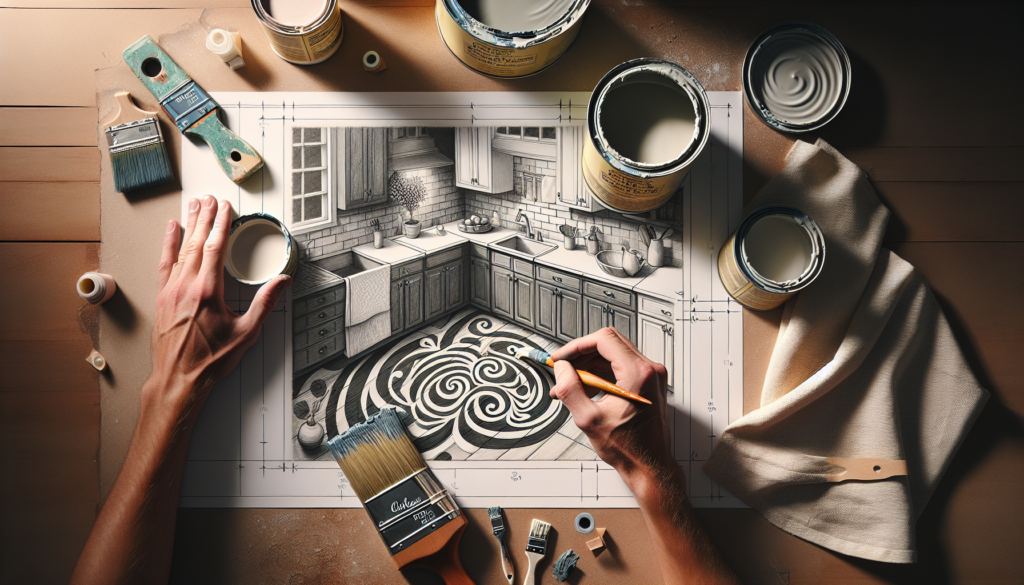
Maintenance and Care for Chalk Painted Countertops
Proper maintenance and care are essential for keeping your chalk painted countertops in excellent condition for years to come. Follow these guidelines to ensure their longevity:
-
Cleaning instructions: To clean chalk painted countertops, use a gentle, non-abrasive cleaner and a soft cloth or sponge. Avoid harsh chemicals or abrasive scrubbers, as they can damage the painted surface. Wipe up spills promptly to prevent staining.
-
Avoiding harsh chemicals: Harsh chemicals, such as bleach or ammonia-based cleaners, can strip away the protective sealant and damage the paint. Opt for mild, non-toxic cleaners specifically formulated for painted surfaces.
-
Reapplying sealant: Over time, the protective sealant on chalk painted countertops may wear off. Periodically evaluate the condition of the sealant and reapply as necessary. This will help maintain the paint’s integrity and protect it from daily use and exposure.
Alternative Paint Options for Countertops
While chalk paint is a popular choice for painting countertops, there are other options worth considering. Some alternatives to chalk paint for countertops include:
-
Epoxy paints: Epoxy paints create a durable, glossy finish that is highly resistant to stains, heat, and water. They are ideal for countertops in kitchens or bathrooms that are subject to frequent use and spills. However, epoxy paints can be more challenging to apply and usually require professional installation.
-
Acrylic paints: Acrylic paints are versatile and come in a wide range of colors. They offer good durability and are relatively easy to apply. However, they may require a stronger topcoat or sealant to protect against wear and tear.
-
Specialty countertop paints: Specialty countertop paints are specifically formulated for use on countertops and offer a range of unique finishes and effects. These may include granite or stone-like textures, metallic finishes, or even marble patterns. They provide a cost-effective alternative to more expensive countertop options like natural stone or quartz.
Removing Chalk Paint from Countertops
If you decide to remove chalk paint from your countertops, there are a couple of methods you can employ:
-
Using paint remover: Paint removers specifically designed for chalk paint can effectively strip the paint from the surface. Follow the manufacturer’s instructions for application and safety precautions. Be sure to thoroughly clean the countertop after removing the paint to remove any residue.
-
Sanding the surface: Another option is to sand the surface to remove the chalk paint. Use a medium-grit sandpaper or a sanding block to gently sand away the paint layer by layer. This method requires patience and may take some time to achieve the desired result. Be sure to clean the countertop thoroughly afterward to remove any remaining dust or debris.
Practical Applications of Chalk Painted Countertops
Chalk painted countertops can be used in various areas of the home to enhance the aesthetic appeal and functionality. Consider the following practical applications:
-
Kitchen countertops: Chalk painted kitchen countertops can instantly update the look of your kitchen. Whether you prefer a classic white or a bold, colorful statement piece, chalk paint offers endless possibilities for customization.
-
Bathroom vanities: Transform your bathroom vanity with chalk paint to create a unique look and feel. From subtle pastels to rich jewel tones, the versatility of chalk paint allows you to create a personalized oasis in your bathroom.
-
Laundry room surfaces: Often overlooked, laundry room surfaces can benefit from a fresh coat of chalk paint. Choose a color that complements your laundry room decor and adds a touch of charm to an otherwise utilitarian space.
Frequently Asked Questions
Q: Can you paint laminate countertops with chalk paint?
A: Yes, you can paint laminate countertops with chalk paint. However, keep in mind that due to the smooth and non-porous nature of laminate, proper surface preparation is crucial. Be sure to clean, sand, and prime the laminate surface before applying chalk paint for better adhesion and durability.
Q: Is sealing necessary for chalk painted countertops?
A: Yes, sealing is necessary for chalk painted countertops to ensure the longevity of the finish. A clear, water-based polyurethane sealer will protect the paint from daily wear and tear, stains, and moisture. It is recommended to apply multiple thin layers of sealer for optimal protection.
Q: How long does chalk paint last on countertops?
A: The lifespan of chalk paint on countertops can vary depending on various factors, such as the level of usage, maintenance, and the quality of the paint. With proper surface preparation, regular cleaning, and reapplication of sealant as needed, chalk paint can last for several years while maintaining its beauty and durability.
In conclusion, painting countertops with chalk paint offers a unique, cost-effective, and creative solution for transforming the look and feel of your space. By following proper preparation techniques, step-by-step application methods, and diligent maintenance, chalk painted countertops can provide long-lasting beauty and functionality. Whether you choose to embrace the rustic charm of chalk paint or explore alternative paint options, the possibilities for upgrading your countertops are endless.
